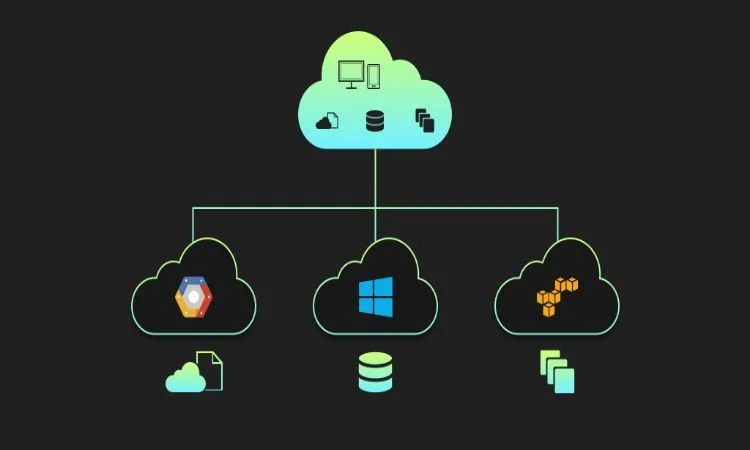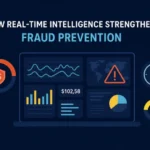
In the current highly dynamic and competitive business environment, sourcing tools have become indispensable for organizations aiming to optimize procurement processes, reduce costs, and improve supplier collaboration. As procurement shifts to a more strategic approach, digital solutions that enhance visibility, control, and efficiency are increasingly being adopted by companies of all sizes and types.
This article emphasizes what is sourcing software, its benefits, and features of sourcing software, detailing how these tools can aid in smarter purchasing decisions by organizations.
What is Sourcing Software?
Sourcing software is a specialized software aimed at automating procurement and sourcing functions. It streamlines processes such as identifying suppliers, proposing and evaluating RFPs, vendor bid evaluation, contract management, and performance tracking in sourcing, all done through a centralized system.
Sourcing software incorporates procurement best practices and guarantees enhanced visibility, thus ensuring standardized and equitable procurement processes across departments and global teams in the acquisition of raw materials, components, or services.
Key Features Of Sourcing Software
Today’s modern sourcing platforms are increasingly being bundled with advanced features aimed at enhancing collaboration and procurement performance. Some common functionalities include:
- Supplier Discovery and Evaluation: Facilitates easy vendor finding and vetting based on set thresholds such as price, compliance, and quality.
- RFX Management (RFI, RFP, RFQ): Analyze data and gain insights about business processes while automating the entire lifecycle of information, proposals, and quotations.
- Contract Lifecycle Management: Manage your supplier contracts like any other document by creating, storing, tracking, and maintaining version control, while receiving alerts for renewals or expirations.
- Spend Analysis: Observe and monitor spending on procurement to identify areas for cost-saving strategies while mitigating maverick spending.
- Compliance Tracking: Ensure that your suppliers meet regulatory standards in comparison to CSR (Corporate Social Responsibility) compliance.
Advantages of Sourcing Software
Cost savings are just one of many benefits brought about by using sourcing software, including:
1. Cost Effectiveness
The automated sourcing processes help decrease procurement costs by providing powerful negotiation capabilities and lowering manual errors and time utilised.
2. Supplier Relationship Improvement
Long-term relationships and partnerships with vendors become easily attainable with the performance monitoring and communication tools made available through sourcing software.
3. Faster Resolution and Decision Making
Factional data access equipped with real-time data reporting allows faster and better-informed decisions when it comes to sourcing.
4. Risk Prevention and Control
Using advanced analytics and elements such as compliance tracking, sourcing software helps identify and manage supplier risks early on.
5. Enhanced Business Growth
The software allows for adaptation to a greater number of vendors, multiple categories, and intricate worldwide supply chains as the business expands.
The Value of Sourcing Software for Your Business
Organizations that continue to use spreadsheets and emails for sourcing need to digitally transform, as those manual methods are inefficient. Such methods are often faced with a lack of transparency and are very difficult to scale due to process bottlenecks. In contrast, sourcing software equips procurement teams with the ability to consolidate supplier information, streamline automation of repetitive tasks, and gain real-time insights into performance analytics.
Furthermore, sourcing software enables cross-departmental collaboration and teamwork with Procurement, Legal, Finance, and Operations, which leads to more cohesive and strategic sourcing decisions.
Guidelines for Selecting The Right Sourcing Software
For any business looking to implement a sourcing solution, the following criteria would need to be considered:
- User Experience: An easy-to-navigate interface enhances team-wide adoption, making adoption across various departments seamless.
- Integrative Functionality: Opt for programs that interface seamlessly with ERP, CRM, and Supply Chain Management Systems.
- Flexibility and Adaptability: An optimal platform is one that works in line with your personal and distinctive sourcing workflows.
- Vendor responsiveness:A dedicated support team is a necessity if you are looking for effortless implementation and progressive refinements.
- Trustworthiness:Compliance and security standards should be upheld relative to industry benchmarks for data protection.
Conclusion
In the recent past, there have been disruptive technological changes that have greatly shifted the nature of business. Software applications and other forms of information technology have made doing business much easier and simpler. Through business sourcing software, it is possible to automate complex business tasks that require high levels of attention, both at the strategic and operational levels of decision-making.
Sourcing software aids businesses by providing great long-term solutions that greatly enhance cost management by providing operational excellence, which in turn saves costs.
FAQ’s
Q1. What Are the Main Functions of Sourcing Software?
A: The ultimate goal of sourcing software is to maintain an efficient procurement process, which includes supplier selection, bidding, contract management, and evaluation.
Q2. Is the Software Only Applicable to Large-Scale Businesses?
A: No, the business software is tailored and designed for businesses at all scales, large and small. Small businesses stand to gain from enhanced supplier management, which will lead to higher financial margins.
Q3. Does the Software Work With Other Tools?
A: Yes, nowadays with the advancement of technology and software engineering, most business sourcing software is designed to work with ERP, Supply Chain, and Finance tools.
Q4. Does sourcing software assist with managing the risk associated with suppliers?
A: It certainly does. It offers features for evaluating suppliers and monitoring their compliance and performance, which helps to mitigate procurement risks.
Q5. What is the ROI of implementing sourcing software?
A: As businesses are all different, reporting an estimate for a return on investment is challenging; however, many organizations express return on investment through massive cost savings at the replaced supplier and around two times improved procurement cycle, along with better collaborative communications with contracting suppliers in the first year.

Why Smart Startups Choose Custom AI Business Solutions Today

How to Optimize Business Operations with Vending Machines in Australia

How a portable office for sale can streamline on-site operations and boost productivity

Onsite Tire Change in Ottawa : Safe Fast & Professional Tire Services

Accelerating drug discovery through the DEL-ML-CS approach

How Smart Tech Helps Drivers Slash Insurance Costs and Beat Rental Deposits

Top Reasons Law Firms Are Replacing Call Centers With TeleWizard

5 Common Multi-Cloud Networking Mistakes & Fixes








